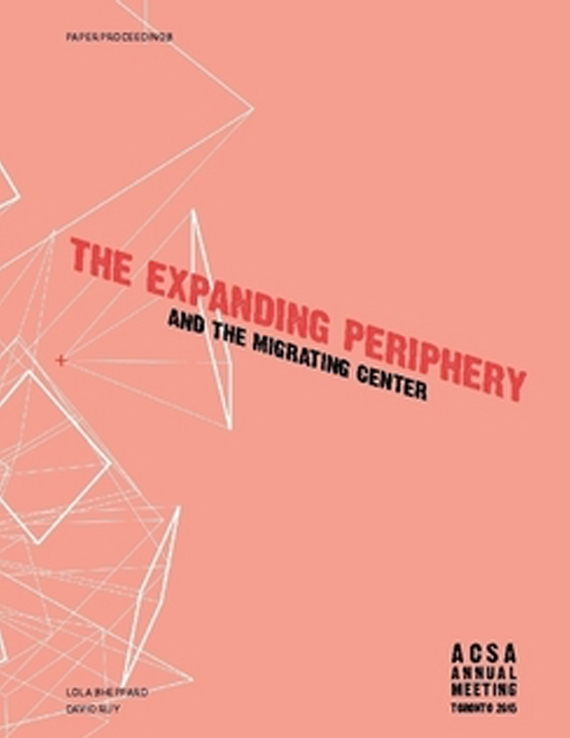Author(s): Adam Fure
In recent years, aesthetics has reentered architectural discourse under new guises and with renewed importance. Influenced by various factors—a disciplinary return to objects, a continual interest in affect, and novel theories of aesthetics—this new focus seeks to detach theories of form from recent tropes of architectural form-making in order to align formal aesthetics with politics. Crucial to this effort is an understanding of how objects (architectural forms as such) connect to larger social, political, and ontological structures. This paper posits a theoretical structure that connects objects and their qualities to “spheres” of identity, contemporary capitalism, and cultural patterns of behavior. Architecture informs these larger configurations through aesthetics; more specifically, the aesthetics of formal articulation, which enables architectural objects to solicit subjects into new forms of engagement. Engagement is political in the sense that it can alter the experiential and behavioral norms of particular cultures, which greatly impacts how individuals interact with the material and social worlds they inhabit. The connections between objects, qualities, and social structures are constituted in “worlds,” which are defined both spatially (how objects are distributed in physical space) and subjectively (how they affect subjectivity). We live not in a world but amongst many worlds. That is, worlds are not exhaustive, hermetic totalities, as in everything on the planet Earth; they are temporary and temporal connections between subjects and objects distributed in space and time. Worlds involve human subjects making aesthetic judgments about what kinds of objects belong together and what types of behavior those groupings invite. Worlds are not defined by proximity, but by aesthetics.Furthermore, worlds are designed. Although architecture has a rich history of “world-design” in the form of utopian fantasies, it has scarcely engaged the type of world-making common in other domains, such as that of contemporary capitalism. Increasingly, corporations are directing resources away from manufacturing toward marketing, public relations, and design: a shift from the production of goods in the traditional sense to the production of the “worlds” in which those goods exist. These worlds consist of overlapping links between dispersed subjectivities, objects, and qualities that focus the attentions and passions of a group. If architecture is to engage the world-making forces of contemporary capitalism, whether with complicity or in resistance, it must understand design as a means of producing new worlds and altering existing ones. Lastly, the power of objects in world-making stems not from their function, meaning, or any other abstraction, but from their look and feel; that is to say, from aesthetics. The aesthetics of objects have the power to alter the ethos of a group: the customs, beliefs, and learned behaviors that influence how individuals act and how they relate to society. Architecture’s political power lies in its ability to increase an individual’s sense of access to the physical world. Freedom, in this sense, is not freedom from—as in freedom from oppressive power structures—but freedom to—as in freedom to engage material culture, thus creating a direct link between objects, aesthetics, experience, and politics.
Volume Editors
David Ruy & Lola Sheppard
ISBN
978-0-935502-95-4

 Study Architecture
Study Architecture  ProPEL
ProPEL 
